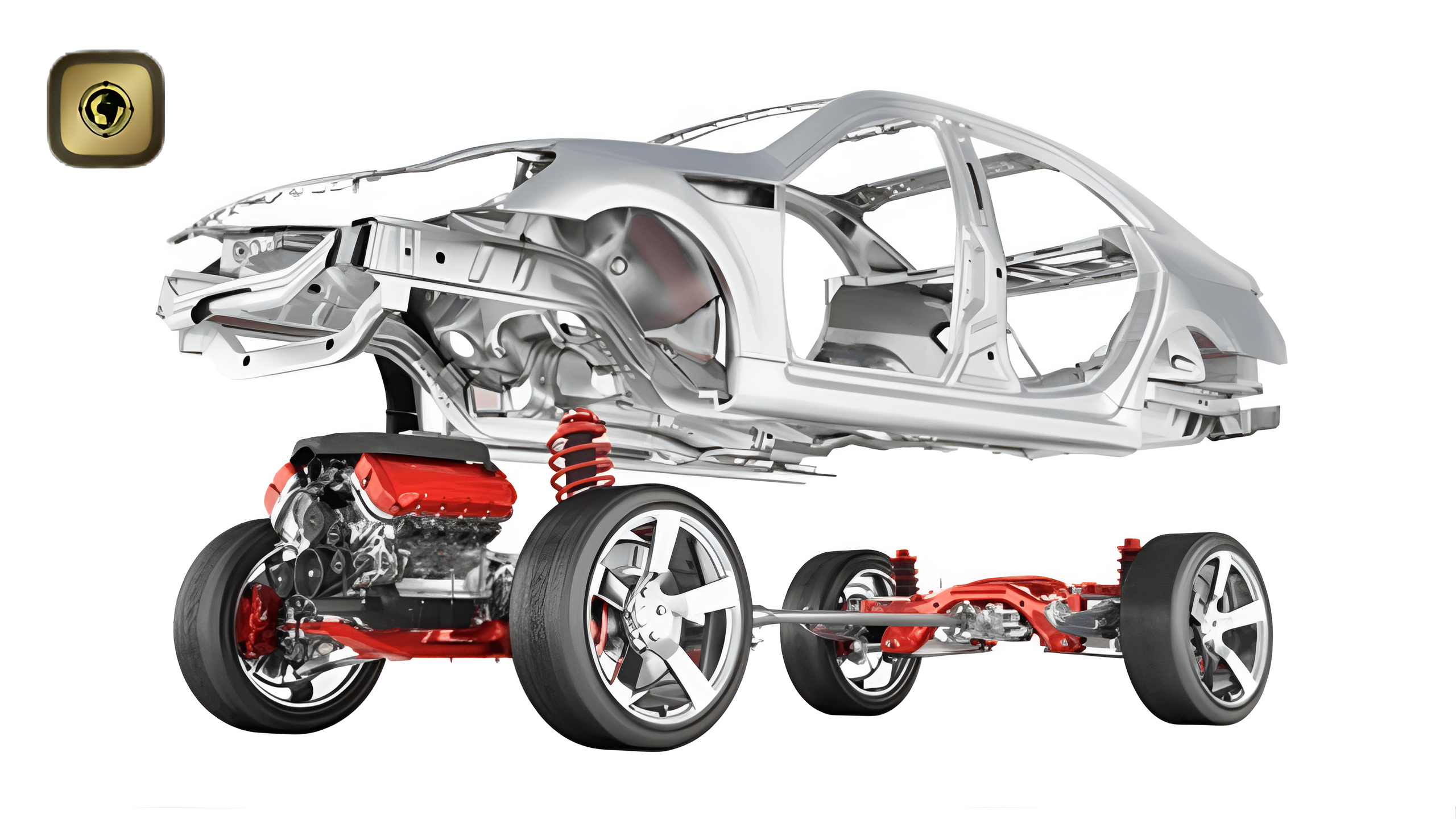March 27, 2025
The MacPherson strut suspension system is one of the most common types of suspension systems found in modern vehicles. Named after the renowned American automotive engineer Earle S. MacPherson, this system has gained popularity for its simple design and cost-effective manufacturing.
What is the MacPherson Strut Suspension?
The MacPherson strut suspension is an independent suspension system typically used on the front axle of a vehicle. It functions as both a suspension and a vibration dampener, which helps absorb shocks from the road. This system uses a substantial compression link or wishbone, which remains stable through an additional link that serves as the mounting point for the wheel’s axle or hub.
The system’s lower arm positions the wheel both vertically and horizontally, ensuring stability and control.
Components of the MacPherson Strut Suspension System:
- Strut Assembly: This combines the shock absorber and coil spring, serving as the core structural element that bears the vehicle’s weight and absorbs impacts from uneven road surfaces.
- Control Arm (Wishbone or A-arm): This part connects the steering knuckle to the vehicle’s body, managing the wheel assembly’s motion.
- Steering Knuckle: This connects the strut assembly to the wheel hub, allowing smooth steering movement.
- Sway Bar (Anti-roll bar): This component reduces body roll during cornering and links the suspension components to the sides of the vehicle.
Advantages of the MacPherson Strut Suspension:
- Easy Maintenance and Manufacturing: With fewer components, the MacPherson strut system is easier to maintain and manufacture than other suspension systems.
- Cost-Effective Production: Its straightforward design leads to lower production and repair costs.
- Space Efficiency: The system is compact, making it ideal for small or compact vehicles.
Disadvantages of the MacPherson Strut Suspension:
- Space Requirements: The system requires a strong top mount and additional vertical space for proper installation.
- Restricted Vertical Wheel Movement: This system does not allow for vertical wheel movement without altering the camber angle or lateral movement.
- Handling Limitations: The MacPherson strut can affect vehicle handling due to limited camber adjustments and roll center selection.
- Noise and Vibration: Compared to other suspension systems, MacPherson struts may generate more noise and vibration.
How Does the MacPherson Strut Suspension Work?
The MacPherson strut suspension operates in a relatively simple manner:
- Shock Absorption: The coil spring and damper work together to absorb shock from sudden jolts caused by rough road conditions.
- Hydraulic Fluid: The shock absorber uses hydraulic fluid to dissipate the heat generated by the shock energy.
- Restraint of Unwanted Movements: The system effectively restrains unwanted movements caused by poor road conditions, keeping the vehicle stable.
Maintenance Tips for MacPherson Strut Suspension:
- Regular Inspection: Periodically check the suspension components for any issues like leaks, sagging coil springs, or damage to the sway bar. Promptly address any issues.
- Timely Replacement: Replace any damaged or worn components to ensure optimal performance.
- Wheel Balance and Rotation: Regularly balance and rotate your tyres to promote uniform wear and extend their lifespan.
- Wheel Alignments: Perform wheel alignments to ensure proper steering performance and handling.
Advancements in Suspension Systems:
- Active Suspension: Real-time suspension adjustments are made with electronic sensors and actuators, providing improved stability, comfort, and handling.
- Lightweight Designs: Modern suspension systems are becoming lighter without compromising performance, which enhances vehicle efficiency.
- Adaptive Damping Technologies: These systems adjust the damping characteristics based on driving conditions, ensuring a comfortable and controlled driving experience.
Conclusion:
The MacPherson strut suspension system has evolved to be one of the most commonly used systems in vehicles today, offering a blend of simplicity, cost-effectiveness, and efficient performance. However, it’s important to remember that maintaining a valid car insurance policy, whether third-party or comprehensive, is just as crucial as ensuring your suspension system is in optimal condition.
Disclaimer: The information provided above is for illustrative purposes only. For further details, please consult the policy wordings and prospectus before completing the sale.



Leave A Comment